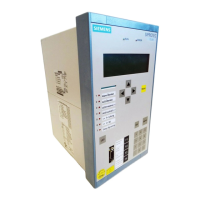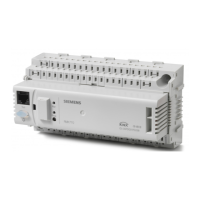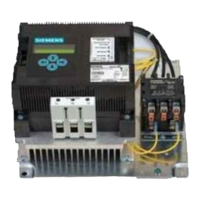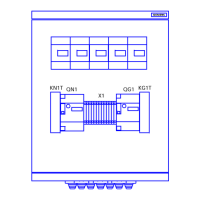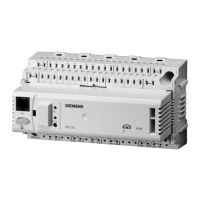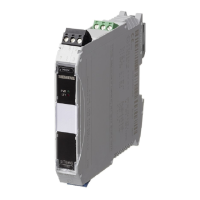7SR224 Argus Applications
Contents
Section 1: Common Functions ................................................................................................................................. 4
1.1 Multiple Settings Groups ......................................................................................................................... 4
1.2 Binary Inputs ........................................................................................................................................... 5
1.2.1 Alarm and Tripping Inputs ......................................................................................................... 5
1.2.2 Control and tripping circuits....................................................................................................... 6
1.3 Binary Outputs ........................................................................................................................................ 8
1.4 LEDs ....................................................................................................................................................... 8
1.5 Phase Allocation and Rotation ................................................................................................................ 8
Section 2: Protection Functions ............................................................................................................................... 9
2.1 Time delayed overcurrent (51/51G/51N)................................................................................................. 9
2.1.1 Selection of Overcurrent Characteristics................................................................................. 10
2.1.2 Reset Delay ............................................................................................................................ 11
2.2 Voltage dependent overcurrent (51V) ................................................................................................... 12
2.3 Cold Load Settings (51c)....................................................................................................................... 12
2.4 Instantaneous Overcurrent (50/50G/50N) ............................................................................................. 13
2.4.1 Blocked Overcurrent Protection Schemes .............................................................................. 13
2.5 Sensitive Earth-fault Protection (50SEF)............................................................................................... 15
2.6 Directional Protection (67)..................................................................................................................... 16
2.6.1 2 Out of 3 Logic....................................................................................................................... 18
2.7 Directional Earth-Fault (50/51G, 50/51N, 51/51SEF)............................................................................ 19
2.8 High Impedance Restricted Earth Fault Protection (64H) ..................................................................... 20
2.9 Negative Phase Sequence Overcurrent (46NPS) ................................................................................. 22
2.10 Undercurrent (37).................................................................................................................................. 22
2.11 Thermal Overload (49) .......................................................................................................................... 22
2.12 Under/Over Voltage Protection (27/59) ................................................................................................. 23
2.13 Neutral Overvoltage (59N) .................................................................................................................... 24
2.13.1 Application with Capacitor Cone Units .................................................................................... 25
2.13.2 Derived NVD Voltage .............................................................................................................. 25
2.14 Negative Phase Sequence Overvoltage (47) ........................................................................................ 25
2.15 Under/Over Frequency (81) .................................................................................................................. 26
Section 3: CT Requirements .................................................................................................................................. 27
3.1 CT Requirements for Overcurrent and Earth Fault Protection .............................................................. 27
3.1.1 Overcurrent Protection CTs .................................................................................................... 27
3.1.2 Earth Fault Protection CTs...................................................................................................... 27
3.2 CT Requirements for High Impedance Restricted Earth Fault Protection ............................................. 28
Section 4: Control Functions .................................................................................................................................. 29
4.1 Auto-reclose Applications...................................................................................................................... 29
4.1.1 Auto-Reclose Example 1......................................................................................................... 30
4.1.2 Auto-Reclose Example 2 (Use of Quicklogic with AR) ............................................................ 31
4.2 Synchronising ....................................................................................................................................... 32
4.2.1 Check Sync, System Sync ...................................................................................................... 32
4.2.2 Rated Voltage Setting – V.T. Connection................................................................................ 32
4.2.3 Bus/Line Undervolts Settings .................................................................................................. 32
4.2.4 Voltage Differential Settings.................................................................................................... 33
4.2.5 Synchronising Bypass Logic ................................................................................................... 33
4.2.6 Slip and Phase Angle Relationship ......................................................................................... 33
4.2.7 Check Synchronising Settings ................................................................................................ 34
4.2.8 System Synchronising Settings............................................................................................... 34
4.2.9 Example Setting Calculations For Slip Timer .......................................................................... 35
4.2.10 Close on Zero ......................................................................................................................... 36
4.3 Loss of Voltage (LOV) Loop Automation Function ................................................................................ 36
4.4 Single/Triple Autoreclose ...................................................................................................................... 40
4.4.1 System Arrangement for Application of Single/Triple AutoReclose......................................... 40
4.4.2 Triple/Single Modes of Operation............................................................................................ 41
4.4.3 Pole Discrepancy .................................................................................................................... 43
©2010 Siemens Protection Devices Limited Chapter 7 Page 2 of 50
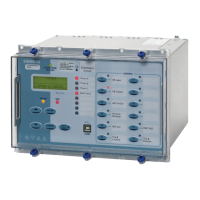
